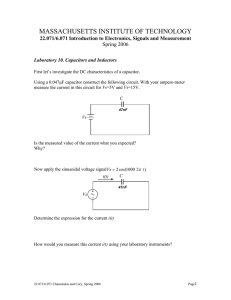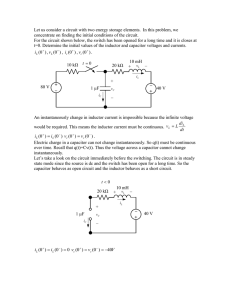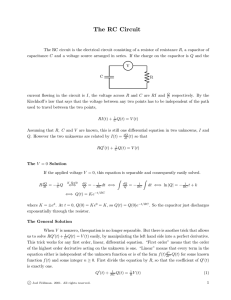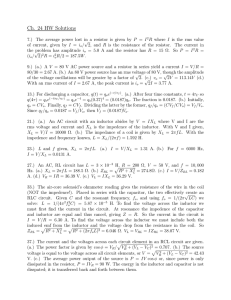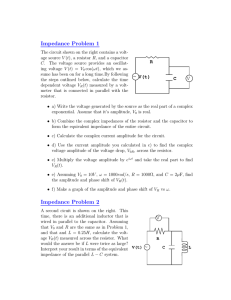Homework Set 32C PH 113 – 10
advertisement
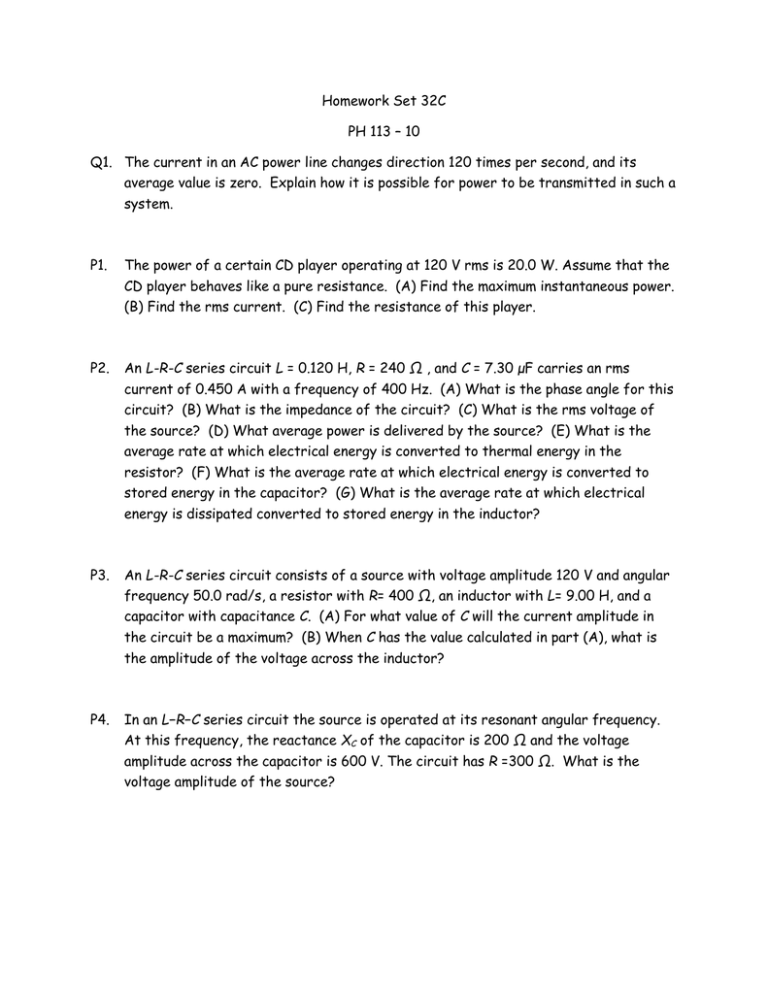
Homework Set 32C PH 113 – 10 Q1. The current in an AC power line changes direction 120 times per second, and its average value is zero. Explain how it is possible for power to be transmitted in such a system. P1. The power of a certain CD player operating at 120 V rms is 20.0 W. Assume that the CD player behaves like a pure resistance. (A) Find the maximum instantaneous power. (B) Find the rms current. (C) Find the resistance of this player. P2. An L-R-C series circuit L = 0.120 H, R = 240 Ω , and C = 7.30 μF carries an rms current of 0.450 A with a frequency of 400 Hz. (A) What is the phase angle for this circuit? (B) What is the impedance of the circuit? (C) What is the rms voltage of the source? (D) What average power is delivered by the source? (E) What is the average rate at which electrical energy is converted to thermal energy in the resistor? (F) What is the average rate at which electrical energy is converted to stored energy in the capacitor? (G) What is the average rate at which electrical energy is dissipated converted to stored energy in the inductor? P3. An L-R-C series circuit consists of a source with voltage amplitude 120 V and angular frequency 50.0 rad/s, a resistor with R= 400 Ω, an inductor with L= 9.00 H, and a capacitor with capacitance C. (A) For what value of C will the current amplitude in the circuit be a maximum? (B) When C has the value calculated in part (A), what is the amplitude of the voltage across the inductor? P4. In an L−R−C series circuit the source is operated at its resonant angular frequency. At this frequency, the reactance XC of the capacitor is 200 Ω and the voltage amplitude across the capacitor is 600 V. The circuit has R =300 Ω. What is the voltage amplitude of the source?





